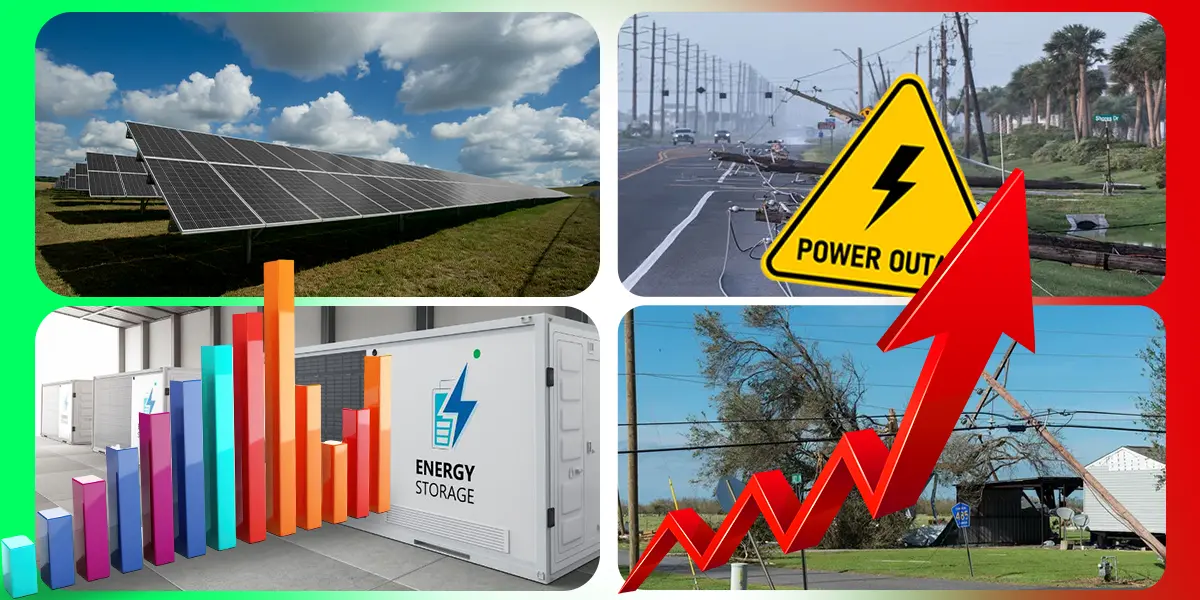
Many homeowners across the US are switching to solar with battery storage. As extreme weather is becoming frequent, more people want energy independence. More families are now planning to install solar battery storage systems in their homes. From hurricanes to wildfires, natural disasters are testing the strength of our power system. As a result, Installing solar panels with batteries has become a necessity in today’s age. As installations of solar with battery storage have already accelerated. Experts say this momentum will continue. People now witness the importance of battery backup, not just solar alone. Furthermore, adding solar batteries help communities bounce back quickly after power outages or blackouts.
Growing Demand for Grid-Independent and Smart Energy
Storms, fires, and heat waves are on the rise in the US. In 2024, millions of homes lost electricity for hours or even for days because traditional grids are vulnerable. But with solar battery backup, the home stays powered during the day and night, even in extreme weather. Unlike generators, these systems are quiet, clean, and need little maintenance. Moreover, they reduce reliance on the grid. During a power outage, your battery storage starts working automatically and keeps the appliance like the fridge, AC, medical devices, and wifi running without delay. Hospitals, schools, and emergency centers are adopting these systems to stay operational. This shift reflects a broader movement toward energy independence.
Smart energy systems are getting smarter. Nowadays, solar with battery storage setups use apps and monitoring tools. These apps let homeowners track energy usage and utilize it further during peak hours.
Federal and Local Incentives Accelerate Adoption
The federal government is playing a major role in supporting solar with battery storage. Programs like the Inflation Reduction Act offer tax credits for installing batteries for solar panels. Moreover, homes with residential battery storage systems can earn credits from net metering. That means you may even sell extra power back to the grid. This makes home battery storage not just a backup plan, but a smart investment.
More states are supporting solar with battery storage through clean energy programs. This includes tax incentives and performance-based credits. For those investing now, the long-term financial rewards are promising.
States like California, Texas, and Florida have also introduced grants and rebates. These incentives reduce upfront costs, making solar more accessible.
Let’s see how a few states are taking the lead in using solar power to become more resilient.
Texas Electricity Grid is Solar Connected
Last summer, Texas had a devastating heatwave. It got so hot that the usage of air conditioning increased, due to which the need for electricity went up. People were worried that Texas might not have enough electricity. But Texas added more solar and battery systems to its electrical grid, due to which the prices of power didn’t go up.
In the last two years, Texas doubled its solar capacity by adding 9.7 gigawatts of solar. Texas also put in 1.8 GWac of utility-scale storage projects. Even when the temperature increases, solar and battery systems still provide 30 to 40% of Texas’s electricity.
Florida’s Solar Resilience System
In the Southeast, hurricanes are very destructive, especially when the water in the Gulf of Mexico is very warm. During hurricanes, winds and rain can damage the electricity infrastructure and power lines. This can leave families without electricity.
For instance, Hurricane Ian hit southwest Florida last year and left 2.6 million people without power. However, the Babcock Ranch near Fort Myers runs on solar power. When Hurricane Ian hit, their 700,000 solar panels and backup batteries kept giving power to all 2,000 homes. Because of the solar battery, Babcock Ranch could recover quickly.
Innovative Microgrid of Puerto Rico
In 2017, Hurricane Maria was disastrous for Puerto Rico. It destroyed homes, businesses, and the energy infrastructures on the island. In some places, people didn’t have electricity for almost a whole year.
This year, Casa Pueblo, a group in the mountain town of Adjuntas, launched a new community-owned solar microgrid. They have already started to give power to more than 350 homes and businesses. With the new power system, the community will be able to power 14 more businesses. However, in case of power outages, the community has backup power for almost 10 days. According to locals, this power system is a great example for the rest of Puerto Rico.
The Texas, Florida, and Puerto Rico examples prove that Solar battery storage is important for climate resilience plans. The Solar energy storage projects make the electric grid more reliable, protect families during extreme weather, and help communities become more resilient.
To Conclude, Solar with battery storage trend is rising across the US. It offers reliable solar energy storage, lower bills, and provides backup power. Whether you choose rooftop or ground mount solar systems, the benefits are real. By installing solar battery storage, you’re making your home safer and smarter. As more people adopt batteries for solar panels, the grid becomes cleaner and more resilient. Now is the perfect time to invest in a solar battery storage system and take control of your energy.
News Source: Arka360
